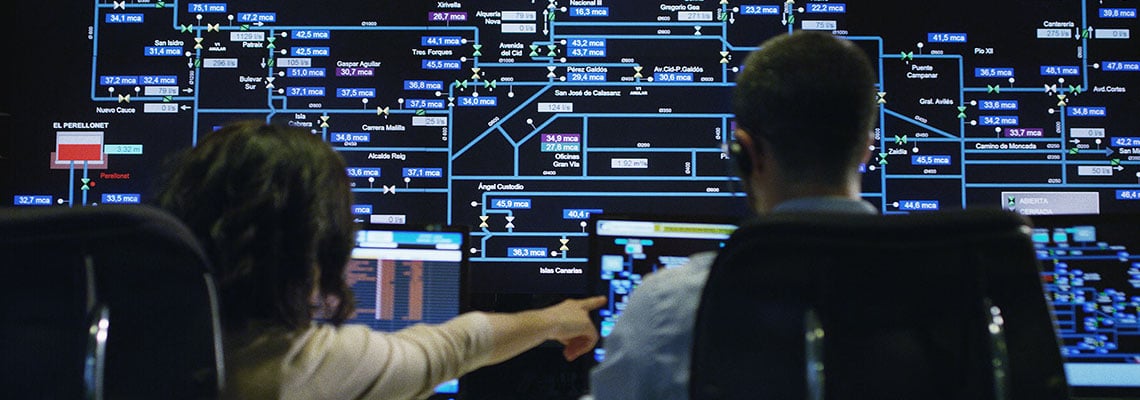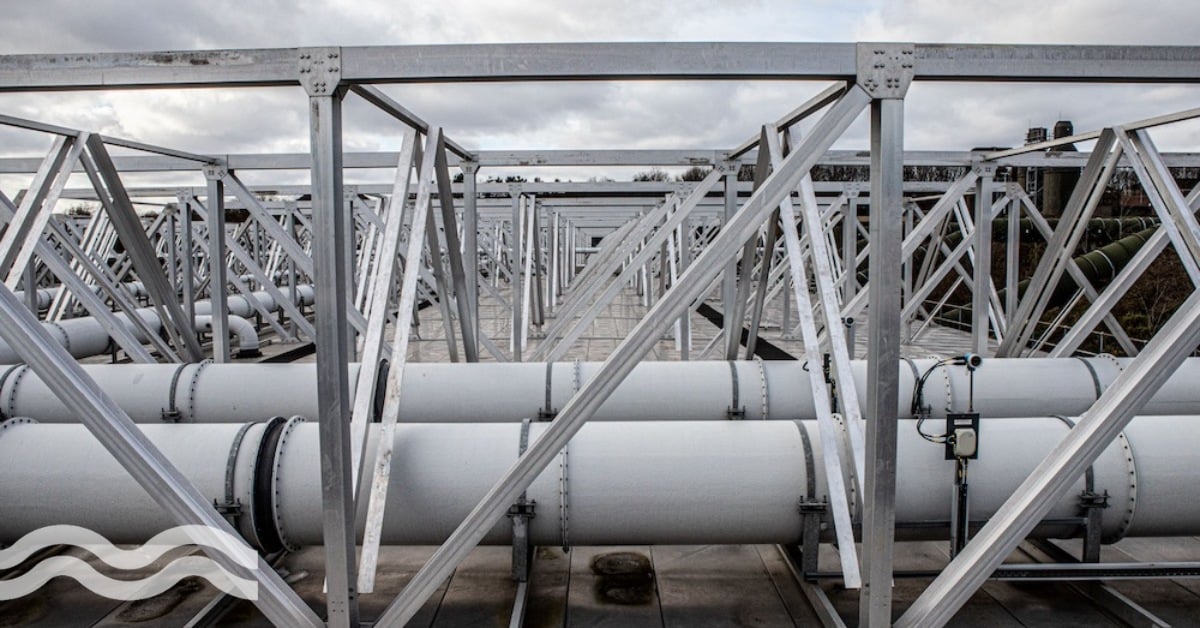
Defining a Digital Twin
Valencia is perhaps better known for its arts, sciences, sandy beaches and futuristic structures rather than hosting one of the most advanced water software systems.
Yet, underpinning the Spanish port city is a sophisticated ‘Digital Twin’ that demonstrated the model long before the term became fashionable.
Before looking into the history and operation of Valencia’s system in more detail, it’s first important to first ask the question: what is a Digital Twin (DT)?
DT technology is being used in multiple industries: from healthcare to manufacturing, transportation and energy. As a result, multiple definitions have emerged, as Digital Twins evolve and are adapted for different purposes.
Put simply, a Digital Twin is a “virtual replica of a physical asset, used to understand the physical counterpart’s performance under different circumstances”.
For a more detailed explanation, the Smart Water eBook, jointly produced by the SWAN Forum and Water Online states:
“A Digital Twin can be de?ned as an actively integrated, accurate digital representation of our physical assets, systems, and treatment processes with a constant stream of data pairing from the physical twin for continuous calibration. It will unlock value by enabling improved insights that support better decisions, leading to better outcomes in the physical world.”
Valencia: the Spanish King of DTs?
The genesis for Valencia’s Digital Twin journey started back in 2007. The utility company, Global Omnium, made an early investment into equipping the network with multiple sensors, as well as focusing on improving internal processes as well.
This started with the installation of 700,000 smart meters in 2009 within a fixed network across the city. According to the SWAN ebook, this “allowed the utility to obtain a great amount of information and key data, represented in real-time environments”.
These early changes saved the company seven million euros (US$7.7 million) annually.
Five years later in 2014, the project was taken to the next level with “disruptive technologies” such as machine learning, arti?cial intelligence, Big Data, and advanced algorithms all added.
And the results? The Valencia DT has an error rating less than 2 per cent in pressures and 4 per cent in flows, which also precisely reproduces all the tank levels.
By effectively stitching together multiple systems to adapt to the different stages of the water cycle, this gave the Spanish company Global Omnium the experience to spin off a separate company, GoAigua.
Demonstrating a true Digital Twin
In a previous interview, Jaime Barba, the CEO of GoAigua said the system has the ability to forecast demand, in real-time, for the next 15 minutes.
In order to obtain a real DT, he adds that hydraulic models must always be updated with key information sources.
For Valencia, the Spanish companies have made continuous efforts to have a hydraulic model that is constantly “data-pairing” with the right data sources, thus making it a “live DT”.
Giving a live demonstration of the Valencia DT model to Aquatech Global Events, Barba presents multiple maps, nodes and datasets, all brought to life with an array of coloured boxes and maps.
Even for the layman, the concept seems relatively easy to grasp. Yet the CEO is quick to point out the technicalities enabling the user-friendly interface.
“Beneath the graphics there are a lot of algorithms, data and know-how,” he says.
“We are able to watch all of the behaviours of all the smart meters within a District Meter Area (DMA),” he adds. “We have algorithms that analyse the data to generate the work orders and automatically inform the operators. So in the morning, the operators don’t come to the office. At 8am they receive the orders that the system is recommending to their houses, so they can set off to look for the leaks.”
Zooming into a DMA, Barba explains that by analysing the colour system (green for smart meter data and blue for flowmeters) it paints the bigger picture. Data from industries and households is combined into a single map. If more water is going into an area than is being consumed, it can suggest three problems:
- Leak in the household/business
- Leak in the system
- Problem with the radio transmission system.
Mathematical modelling in real time
For the next stage of the demonstration, Barba shows mathematical modelling in real time, starting with flow.
Pipes are coloured, depending on whether the measured flow matches, or exceeds the forecast demand.
“The system is calculating in real time what are the changes: the flow behaviour matched to the forecast demand for the network in Valencia,” he enthuses. “The system is analysed in real time every five minutes as it calculates a new situation, all through centralised data.”
As well as flow, other “nodes” can show additional data such as pressure, which are all then fed in to and are key parts of the overall Digital Twin.
Remembering people in the digital transformation journey
With the ability to connect to multiple smart meters and leak detection systems, regardless of the manufacturer, the DT in Valencia embodies the interoperability spirit that a historically siloed water sector has been craving.
Yet, this has taken time, investment and training not just of the teams involved, but the Digital Twin itself. “In ten years, we’ve trained the algorithms and system to fine tune it for the final user, to help pinpoint where the leaks are,” adds Barba.
The system was recently commended by the Aquatech Innovation Award Jury for its ability to connect with multiple platforms and systems.
As referenced by SWAN in its e-book, DT technology has the potential to “bring together diverse perspectives, data sets, and solutions under one umbrella application”.
However, in order to witness the success as in the case of Valencia, utilities “must simultaneously undergo digital transformation, which begins and ends with people, and that change management is vital”.
SWAN concluded: “It is clear that the global water sector has embraced this technology; however, it is understood that it will not be an easy journey for most utilities, regardless of size and structure. There exist many challenges ahead for utilities, both technological and cultural, when implementing DT technology.”
To find out more information on the full ebook report, click here.


